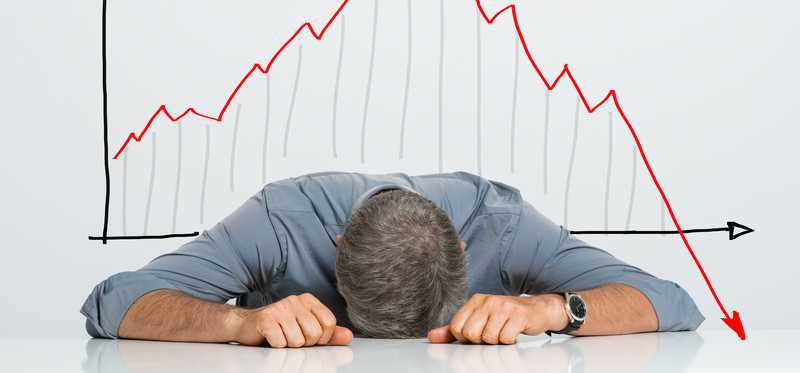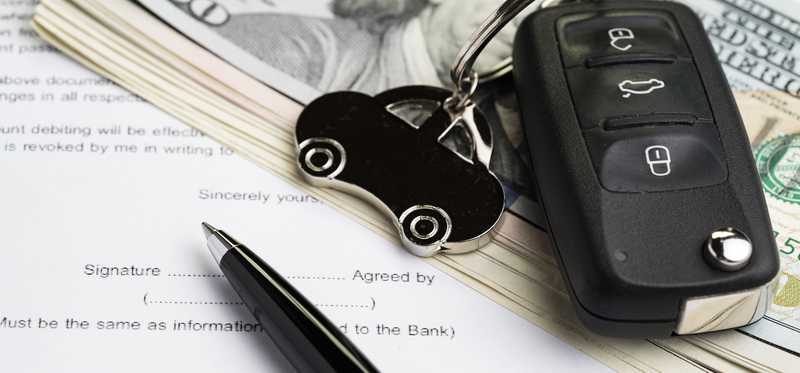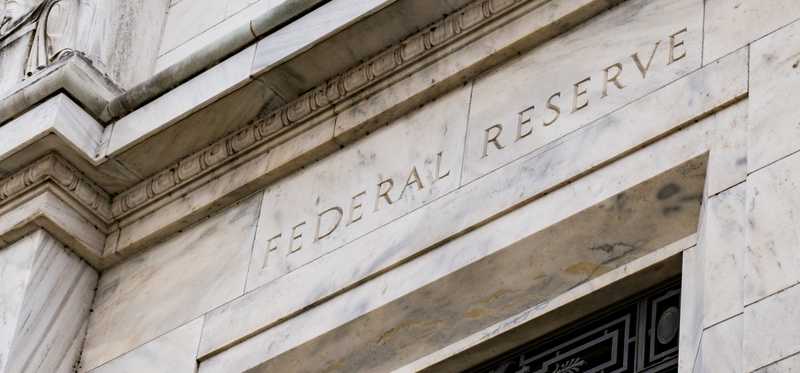10 Trends to Help You Understand the Economy Right Now

10 Trends to Help You Understand the Economy Right Now
A recession looms
The U.S. economy is a complex beast with a huge number of moving parts. It's hard even for trained economists to get their heads around the inevitable ups and downs. Right now the word on most people's lips is "recession," which is a severe economic contraction. The problem, of course, is that COVID-19 has thrown a wrench into the normal workings of the world.
You'll hear lots of people say that the U.S. economy is in an official recession when there have been two consecutive quarters of negative gross domestic product (GDP). Only that's not anything official, it's just a rule of thumb. The official start and end dates for recessions are determined by the National Bureau of Economic Research (NBER). The NBER looks at a variety of factors, including GDP, when making its determinations. So if you want to understand the U.S. economy today, you need to look at a number of different things. Here are 10 that suggest we may already be in a recession.
5 Winning Stocks Under $49
We hear it over and over from investors, “I wish I had bought Amazon or Netflix when they were first recommended by the Motley Fool. I’d be sitting on a gold mine!” And it’s true. And while Amazon and Netflix have had a good run, we think these 5 other stocks are screaming buys. And you can buy them now for less than $49 a share! Simply click here to learn how to get your copy of “5 Growth Stocks Under $49” for FREE for a limited time only.
Previous
Next

1. Gross domestic product (GDP)
Gross domestic product is, essentially, a measure of economic growth. If the number is positive the economy is expanding, if the number is negative the economy is shrinking. Large developed countries like the United States tend to have very low growth rates, so it isn't uncommon to see growth falter for a quarter here or there and then pick up again pretty quickly. All in, GDP is an important number when looking at the U.S. economy (or any economy for that matter).
Right now GDP is flashing a major warning sign. The metric fell from an annualized growth rate of roughly 2% in the fourth quarter of 2019 to an annualized contraction rate of 4.8% in the first quarter of 2020. That's a very big change in direction, suggesting that this is not a normal fluctuation in the data. Obviously, the impact of the efforts to slow the spread of COVID-19 is a big part of the issue here, since those efforts have effectively shut down broad swaths of the domestic economy. Worse, this was just the first set of numbers, which are revised several times as more data comes in. Economists expect first quarter updates to show the quarter's GDP performance was even worse than originally thought. And it's worth noting that the social distancing efforts to fight COVID-19 impacted only a small part of the first quarter and are lingering on into the second quarter. This is a bad situation for sure.
Previous
Next

2. Jobless claims
The efforts to curtail the spread of COVID-19 involved the government shutting down non-essential businesses. There are a number of impacts from this on the economic level, but one that has been particularly worrying is the steep rise in the number of people looking for unemployment benefits. In just eight weeks more than 36 million Americans found themselves out of work. That's more jobs than were lost during the entire 2007 to 2009 recession and more jobs than were created during the subsequent 10-year recovery. And while the number of claims peaked during the first couple of weeks of the shutdown, claims are still coming in. So while 36 million is the number for now, it could go even higher.
The U.S. government has stepped in to expand unemployment benefits given the nature of the current job losses. That will soften the hit to some degree. But still, when people lose their jobs they usually start cutting back in other areas to save money. As long as unemployment claims remain at an elevated level there's likely to be problems elsewhere.
ALSO READ: 5 Reasons the Market Is Rising While Unemployment Is Skyrocketing
Previous
Next

3. The unemployment rate
Unemployment claims and the unemployment rate are obviously tied at the hip. With claims heading higher throughout April it was a lock that April's unemployment rate would rise. But the big piece of news here is the size of the increase, which is important because it helps quantify the hit the economy has really taken. When the April numbers were finally released, an alarming 14.4% unemployment rate was announced. That's up from around 4.4% before the COVID-19 shut downs began. However, even this isn't the full picture. If you include people who have stopped looking for work and those who are "underemployed," the rate rises to 22.8%.
That level of change in so short a time is, frankly, breathtaking. It makes complete sense given the rise in unemployment claims, and it really lays out the damage that's been done to the economy. But it's not the only metric that shows this.
Previous
Next

4. Retail sales
With so many people out of work and stores shut down because of COVID-19 non-essential business closures and social distancing, economists were expecting retail sales to be weak. But when April numbers came out in mid-May the hit was even worse than expected, with the record 16.4% decline exceeding the average projected decline of 12.3%. The pain was widespread, with discretionary spending (for things like eating out and apparel) seeing notable declines. Based on the efforts to slow the spread of the coronavirus this isn't much of a shock. However, the steepness of the decline is troubling, to the say the least. And it comes on top of a decline of 8.3% in March.
Worse, with the U.S. economy only just starting to open again and unemployment high, May's numbers aren't likely to see much of an improvement. The pain could linger for a long time, as well, if the economy falls into an official recession, as many expect.
When you look at some of the subsegments of retail sales, meanwhile, you can get a better idea of what people are thinking. For example, it's a no-brainer to pull back on unnecessary items like a fancy dinner at a restaurant. The one bright spot in the report was grocery stores, where sales increased because people are stuck at home and trying to trim spending elsewhere. But there's far more going on, with the auto sector (covered as the next point on this list) providing interesting insights into the future.
5 Winning Stocks Under $49
We hear it over and over from investors, “I wish I had bought Amazon or Netflix when they were first recommended by the Motley Fool. I’d be sitting on a gold mine!” And it’s true. And while Amazon and Netflix have had a good run, we think these 5 other stocks are screaming buys. And you can buy them now for less than $49 a share! Simply click here to learn how to get your copy of “5 Growth Stocks Under $49” for FREE for a limited time only.
Previous
Next

5. Auto sales
Although vehicle sales get wrapped up in retail sales, they are an interesting subcategory because they are expensive, long-lived items. You don't run out to buy a car on a whim and, usually, they are paid for over time with a loan. It's a massive commitment for most people. So it shouldn't be much of a surprise that car sales have fallen off a cliff. April sales data show that the broad motor vehicles and parts segment fell notably in both March and April. Only this covers just about everything related to cars. Industry watcher J.D. Power provides a different look.
A report from J.D. Power put out in late April noted that new car sales were 48% below its estimate for the week of April 19. Although it pitched that as an improvement from the 51% miss the previous week, car sales are basically running at half the rate that was expected prior to the impact of COVID-19. That steep of a decline will impact automakers, car dealers, and their employees.
Used car sales weren't any better, down 47% from the same week in 2019. While that was up from a decline of 57% in the previous week, the fact remains that consumers appear to be unwilling to tie up large amounts of money in long-lived assets regardless of whether they are new or used. This suggests that consumers are fearful about the future, which itself can lead to negative economic consequences.
Previous
Next

6. Travel falls off a cliff
People have been asked to stay home because of COVID-19 and non-essential businesses were quickly shuttered. That means that people aren't moving around like they were earlier in the year. There are any number of ways to look at this, but perhaps one of the most interesting is the demand for various types of fuel. According to the U.S. Energy Information Administration (EIA), demand for jet fuel is running around 50% below its five-year average. Demand for gasoline is off its five-year average by around 35% (though gasoline demand has been reportedly picking up again, now that the economy is starting to slowly reopen).
There are major implications here as people choose to stay home instead of venturing out. From a day-to-day view, Trips to the mall and other shopping and eating locations just aren't taking place. From a bigger picture view, people around the country are postponing or canceling vacations and business trips. All of these things account for economic activity that just isn't happening right now. In some cases, like air travel, it might be a long time before people are willing to get back to normal. Boeing, struggling with self-inflicted wounds and the impact of COVID-19, is expecting a full recovery in air travel to take up to three years. That's an awfully long time.
ALSO READ: 3 Brand-Name Travel Stocks to Avoid Like the Plague
Previous
Next

7. Oil everywhere
Looking at travel through the lens of fuel demand leads right into oil and natural gas drilling. With demand having fallen off a cliff, there's a massive supply/demand imbalance that's upending energy markets around the world. The United States is set to get hit fairly hard, notably within the onshore fracking space. With prices hitting historic low levels, oil companies are pulling back hard and fast on production. Weaker players are going bankrupt, some are simply plugging up their wells, and still others are just trimming output. But the end result is that production is falling.
However, that production decline is also leading to job cuts. Those jobs won't come back until production picks up again. Only that can't happen until economic activity picks up again. It's a chicken and egg situation. Making things worse, the excess production today is being put into storage for later. All of that excess will have to be worked off before the energy market can even hope to get back to a more normal state.
Previous
Next

8. Empty shelves when there's plenty of food
At first it was toilet paper and paper towels that people couldn't get, which was largely due to hoarding on the part of consumers. But more recently even bigger problems have started to emerge. For example, farmers are plowing in fields of vegetables and livestock is being killed instead of processed for consumption. And yet, if you go to your local grocery store, you'll likely find that there are shortages of fresh vegetables and meat.
There are many issues behind these disparate pieces of information. But one of the most notable is that demand from restaurants, schools, and hotels has basically screeched to a halt while consumer demand has increased beyond normal levels. And the U.S. supply chain isn't capable of switching gears fast enough to get extra food from one channel into the other. That means farms are struggling, grocery stores are losing potential sales, and customers are leaving empty handed or just buying whatever they can get their hands on. When the economy starts to get back to a more normal footing this should work itself out, but supply chain issues are likely to impede the normalization process. And if farmers go bankrupt because of this disarray, there will be lingering hardships to deal with that will hamper the economy when demand does start to return.
5 Winning Stocks Under $49
We hear it over and over from investors, “I wish I had bought Amazon or Netflix when they were first recommended by the Motley Fool. I’d be sitting on a gold mine!” And it’s true. And while Amazon and Netflix have had a good run, we think these 5 other stocks are screaming buys. And you can buy them now for less than $49 a share! Simply click here to learn how to get your copy of “5 Growth Stocks Under $49” for FREE for a limited time only.
Previous
Next

9. No shows on Broadway
The hospitality and entertainment industries have been devastated by COVID-19 in a way that few could have imagined. Every Broadway show in New York City, the city that supposedly never sleeps, had to shut down. All of Disney's amusement parks were closed, though they are starting to open back up again at this point -- at markedly reduced occupancy levels. The basketball and baseball seasons that were supposed to be going on, aren't. And even the perennial bad boy (and girl) rock and rollers have fallen silent. That's removing a huge amount of spending from the economy that likely won't bounce back to previous levels for a long time.
That's because, even when these things do start back up again, everything from hotels to amusement parks will have to deal with new cleaning processes, the continuation of social distancing measures, and the reluctance of consumers to start going into group settings again. Employment directly tied to these businesses will be slow to return, but so, too, will spending by entertainment and travel companies that support other industries (farmers, for example). It's a ripple effect that should, by this point, be an obvious theme.
Previous
Next

10. The Fed doing everything it can
Which brings this story all the way back to the government, which has taken huge steps to support the economy up and down the line. That includes the local, state, and federal levels. But there's one entity, the Federal Reserve, that has gone to extensive lengths to help. Although an incredibly complicated process, the help being provided by the Fed has come in the form of low interest rates and an effort to increase liquidity.
The latter has, so far, been a major success. When there was a real risk of capital markets seizing up, the Fed stepped in and got the gears working again. That's incredibly valuable. However, low interest rates are a more perverse problem. Money is available at low cost, but it doesn't look like anyone has the animal spirits to go out and use it. Making it easy to borrow when nobody wants to borrow is like pushing on a string, it doesn't do anything. And yet the Fed can't raise rates because it could stymie a potential recovery. It is a difficult situation and one that probably won't get any easier to manage until after the upcoming recession ends. But for investors watching the economy, keeping an eye on the Fed (and importantly what it says and, at times, does not say) through the difficult days ahead will be vitally important.
Which is why the recent comment by Fed president Jerome Powell that the government needs to do more is a little concerning. It suggests that the Fed is worried it doesn't have tools to help the economy get through this downturn. If that's true, and with politicians in Washington often far apart on policy issues, the likelihood of recession materially increases... and it could linger for a long time.
Reuben Gregg Brewer owns shares of Walt Disney. The Motley Fool owns shares of and recommends Walt Disney and recommends the following options: long January 2021 $60 calls on Walt Disney and short July 2020 $115 calls on Walt Disney. The Motley Fool has a disclosure policy.
Previous
Next
Invest Smarter with The Motley Fool
Join Over Half a Million Premium Members Receiving…
- New Stock Picks Each Month
- Detailed Analysis of Companies
- Model Portfolios
- Live Streaming During Market Hours
- And Much More
READ MORE
HOW THE MOTLEY FOOL CAN HELP YOU
-
Premium Investing Guidance
Market beating stocks from our award-winning service
-
The Daily Upside Newsletter
Investment news and high-quality insights delivered straight to your inbox
-
Get Started Investing
You can do it. Successful investing in just a few steps
-
Win at Retirement
Secrets and strategies for the post-work life you want.
-
Find a Broker
Find the right brokerage account for you.
-
Listen to our Podcasts
Hear our experts take on stocks, the market, and how to invest.
Premium Investing Services
Invest better with The Motley Fool. Get stock recommendations, portfolio guidance, and more from The Motley Fool's premium services.